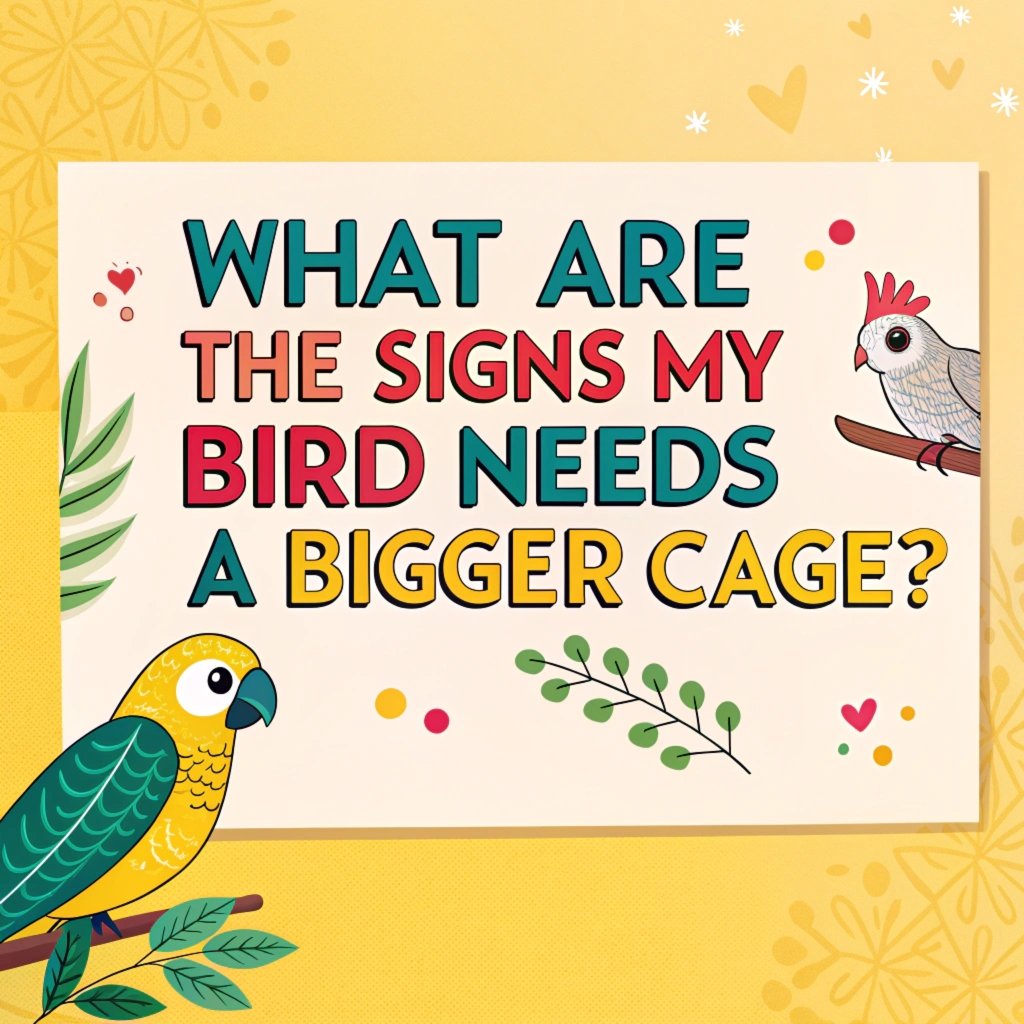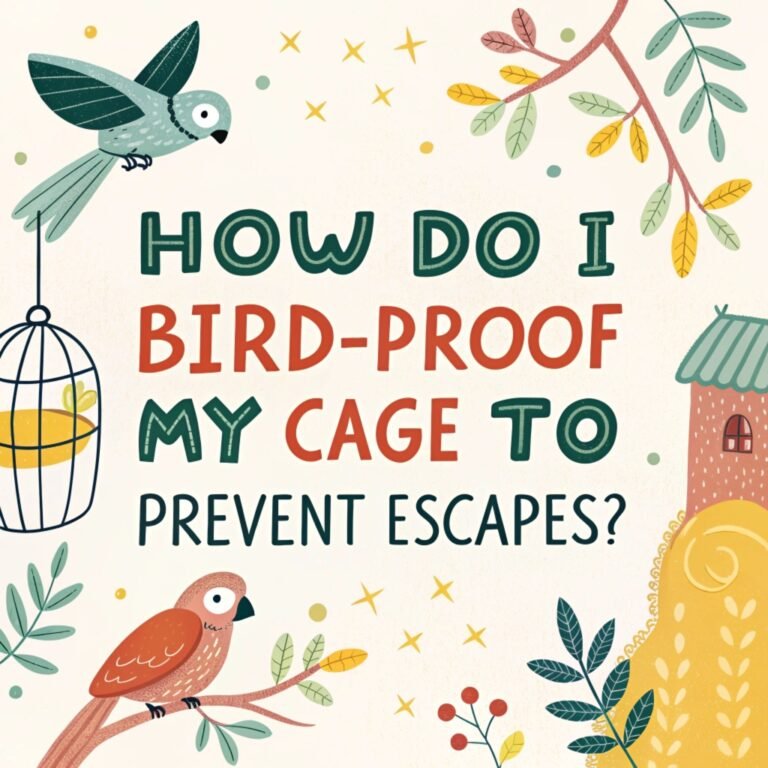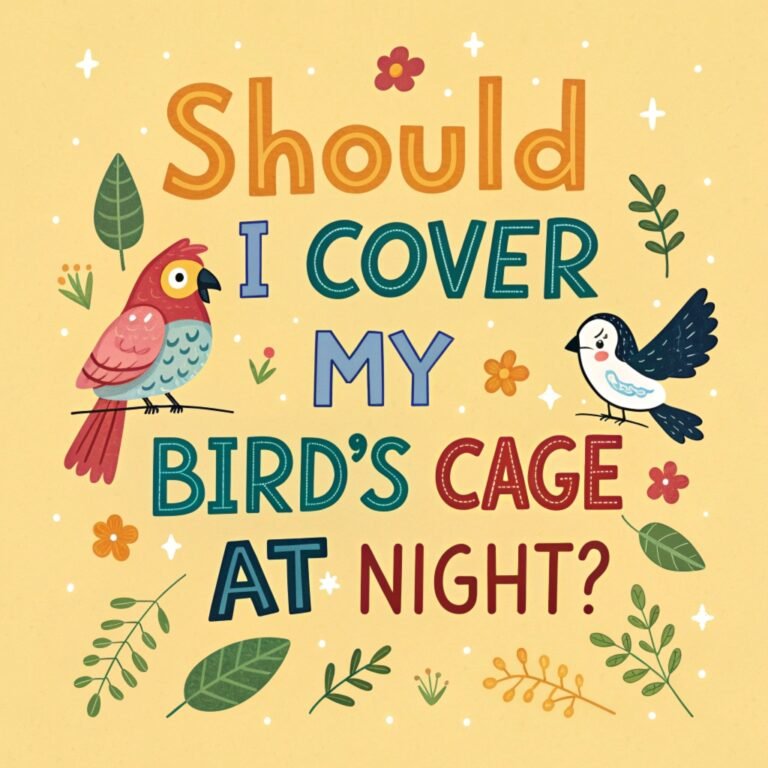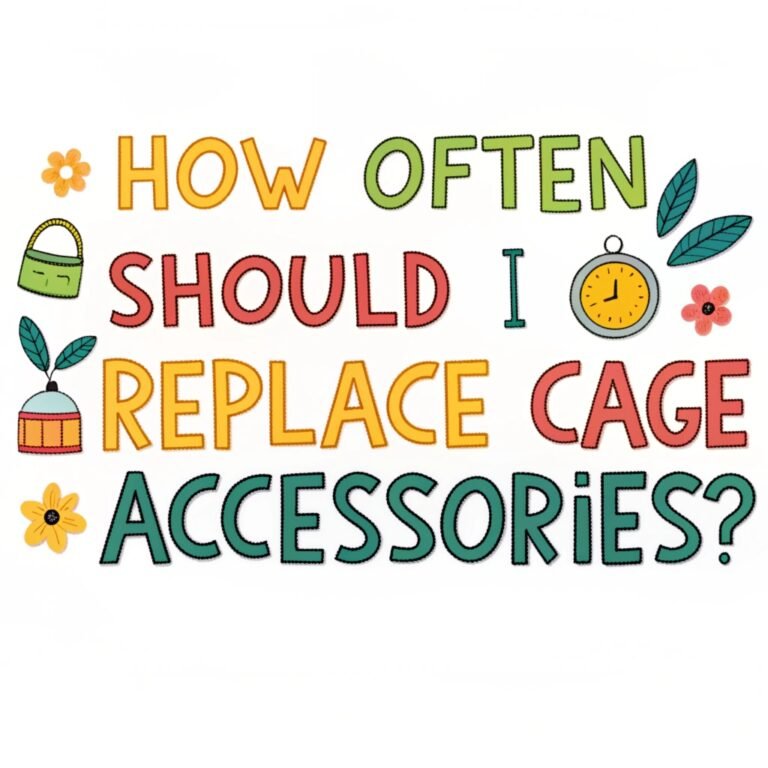What Are The Signs My Bird Needs A Bigger Cage? Comprehensive Guide To Space Requirements
As a bird owner, ensuring your pet has enough space is crucial for their health and happiness.
Birds are naturally active creatures, and a cage that’s too small can lead to stress and behavioral issues. In this post, we’ll explore the key signs that indicate your bird might need a bigger cage.
From changes in behavior to physical health concerns, understanding these signs can help you provide a better environment for your avian companion.
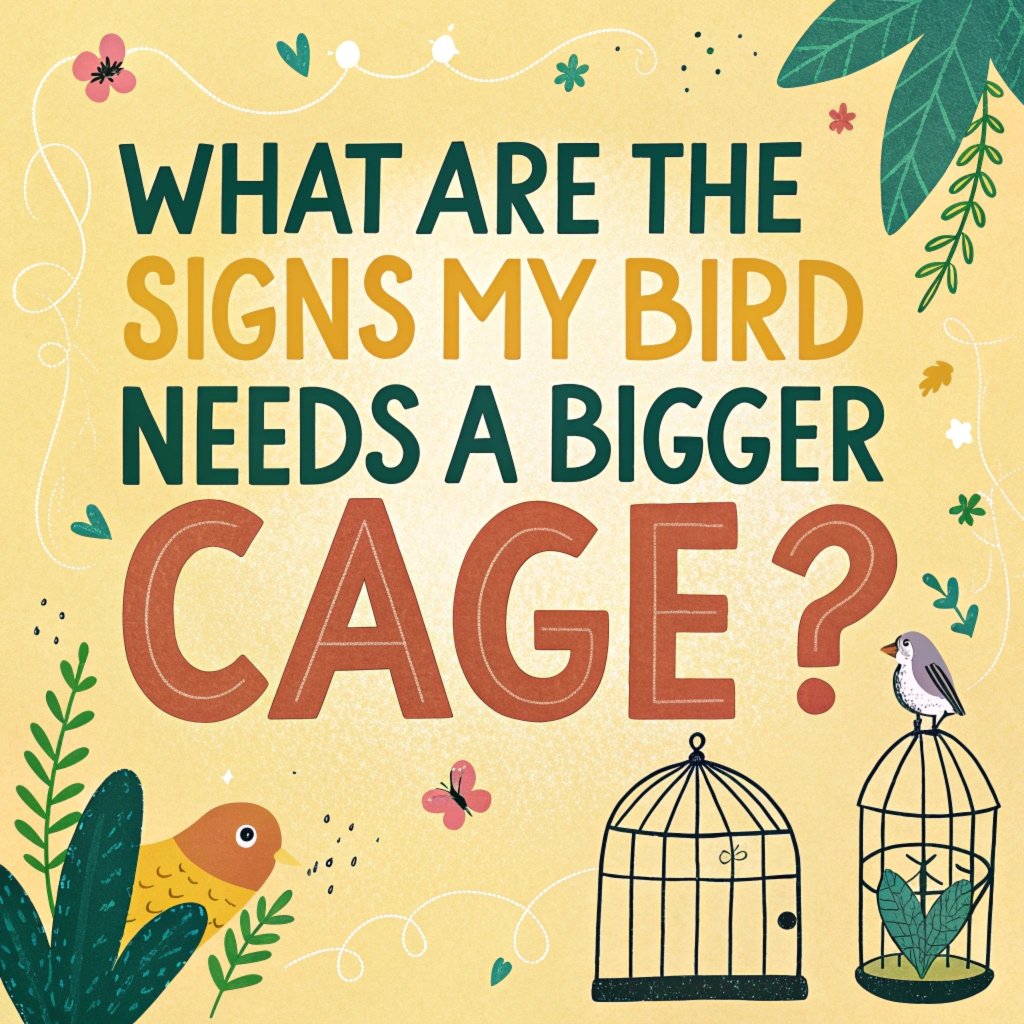
Key Takeaways:
- Birds need space to move freely and engage in natural behaviors.
- A cage that’s too small can lead to stress, aggression, and health issues.
- Look for signs like feather plucking, excessive screaming, or lethargy.
- Ensure the cage allows for full wing extension and movement.
- Consider the bird’s species and size when choosing a cage.
- Incorporate toys and perches to enrich the bird’s environment.
- Regularly assess your bird’s behavior and health for signs of discomfort.
- Consult with avian experts if you’re unsure about the right cage size.
- A larger cage can improve your bird’s quality of life significantly.
- Remember, a happy bird is a healthy bird, thriving in a spacious environment.
How to Measure the Right Cage Size
Measuring the right cage size is a critical step in ensuring your bird’s well-being. The first consideration should be your bird’s wingspan. A cage that allows for full wing extension without touching the bars is essential.
This space requirement isn’t just about comfort; it’s about allowing your bird to engage in natural behaviors and maintain physical health.
Start by observing your bird’s movements. Does it have enough room to flap its wings, climb, and play without restriction?
Remember, the cage should accommodate not just your bird, but also its accessories. Include space for multiple perches, toys, and food bowls, ensuring they don’t crowd the living area.
For most bird species, width is more important than height. Birds fly horizontally, not vertically, so a wider cage provides more usable space. A good rule of thumb is to choose a cage that’s at least twice as wide as your bird’s wingspan.
Don’t forget to factor in tail length for birds with long tails, as they need extra vertical space to prevent damage to their feathers.
Understanding Your Bird’s Space Needs
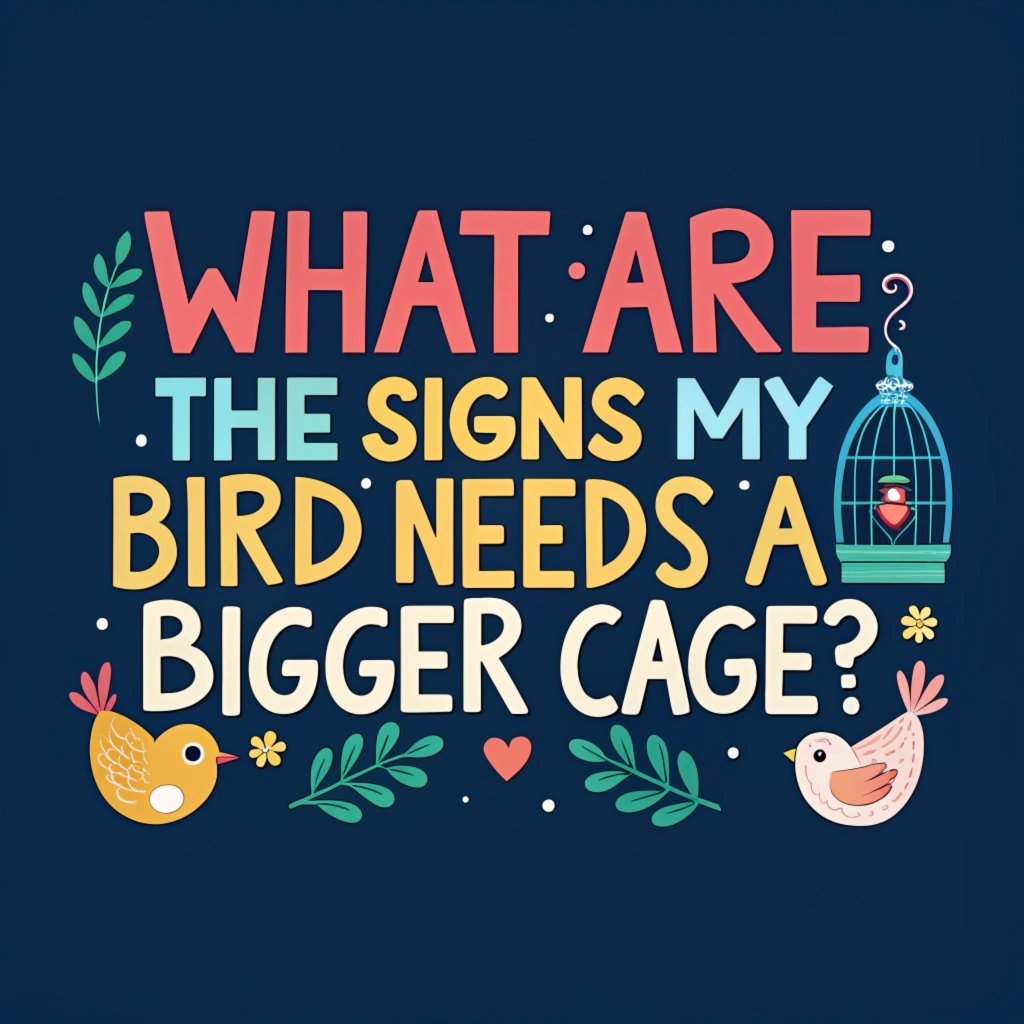
Birds are active creatures that require ample space to thrive in captivity. In the wild, they have vast territories to explore, forage, and fly.
While we can’t replicate this entirely in a domestic setting, we can strive to provide an environment that meets their physical and psychological needs.
Different bird species have varying space requirements. Larger birds like macaws and cockatoos naturally need more room, but even small birds like budgies and canaries benefit from extra space.
Consider your bird’s natural behaviors when assessing space needs. Does your species like to climb, fly short distances, or play with toys? The cage should accommodate these activities.
Remember that a spacious cage isn’t just about physical movement; it’s also about mental stimulation.
A larger cage allows for more enrichment opportunities, such as multiple perches at different heights, various toys, and even small flight paths. This variety helps prevent boredom and reduces the likelihood of stress-related behaviors.
Common Mistakes in Bird Cage Selection
Choosing the wrong cage is a common pitfall that can lead to various health and behavioral issues in birds. One of the most frequent mistakes is opting for a cage that’s too small.
While it might seem adequate at first glance, remember that your bird will be spending a significant amount of time in this space. A cramped cage can lead to stress, reduced activity, and even physical health problems.
Another common error is selecting a cage with inappropriate bar spacing. Bars that are too wide can allow small birds to escape or get their heads stuck, while bars that are too close together can limit visibility and make the cage feel more confining.
Always check the recommended bar spacing for your specific bird species.
Material and finish are also crucial factors often overlooked. Some cages may have toxic finishes or be made of materials that can harm your bird if ingested.
Opt for cages made of safe, bird-friendly materials like stainless steel or powder-coated metal. Avoid galvanized wire cages unless they’ve been properly treated to remove toxic residues.
Behavioral Changes Indicating Cage Size Issues
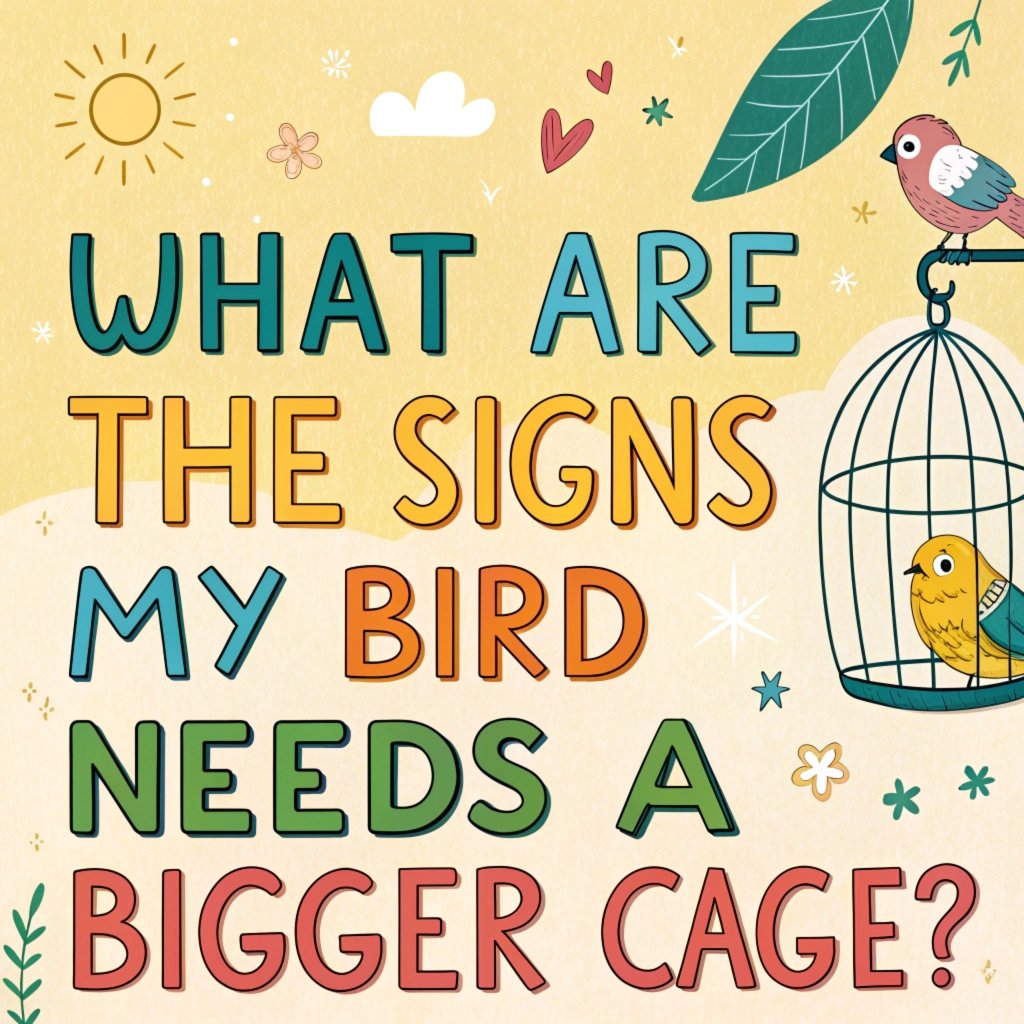
Behavioral changes can be one of the most telling signs that your bird’s cage is too small.
Birds are intelligent and sensitive creatures, and they often communicate their discomfort through changes in behavior. Pay close attention to your bird’s daily habits and demeanor to catch these signs early.
One common indicator is increased aggression. If your normally friendly bird suddenly becomes irritable or starts biting, it might be feeling stressed due to lack of space.
Similarly, excessive screaming or vocalization beyond what’s normal for your bird’s species could be a cry for attention or a sign of distress.
Lethargy or decreased activity is another red flag. If your bird seems less interested in playing or exploring, it might not have enough space to move comfortably.
On the flip side, hyperactivity or restlessness, especially if your bird seems to be pacing back and forth frequently, can also indicate cage size issues.
Creating a Comfortable Environment for Your Bird
A comfortable environment is essential for your bird’s physical and mental well-being. It’s not just about the size of the cage, but also about how you set it up.
Start by choosing the right location for the cage. It should be in a room where the bird can be part of family activities but also have quiet times.
Include a variety of perches of different diameters and textures. This mimics the variety of branches a bird would encounter in the wild and helps prevent foot problems.
Place perches at different heights to encourage climbing and exercise. Remember to position them so that your bird’s tail doesn’t touch the cage bottom when sitting.
Toys are crucial for mental stimulation. Rotate toys regularly to keep your bird interested and prevent boredom. Include a mix of chew toys, puzzles, and interactive toys.
However, be careful not to overcrowd the cage – your bird still needs space to move freely.
The Role of Toys and Accessories in Cage Space
Toys and accessories play a vital role in your bird’s environment, contributing to both physical and mental stimulation.
However, it’s important to strike a balance between providing enrichment and maintaining adequate space. A well-equipped cage should still allow your bird to move freely and engage in natural behaviors.
When selecting toys, consider your bird’s size and preferences. Some birds enjoy swings, while others prefer puzzles or foraging toys.
Rotate toys regularly to keep your bird engaged and prevent boredom. Remember that even small toys take up space, so choose wisely and avoid overcrowding.
Perches are essential accessories that require careful placement. Offer a variety of perch types and diameters to exercise your bird’s feet and prevent podiatry issues.
Position perches at different heights to encourage climbing and ensure your bird can move between them comfortably without hitting the cage top or sides.
The Importance of Cage Size for Bird Health
Cage size directly impacts your bird’s physical and mental health. A spacious cage allows for exercise, which is crucial for maintaining a healthy weight and preventing obesity-related issues.
Birds in appropriately sized cages are more likely to engage in natural behaviors like flying, climbing, and foraging, which contribute to overall well-being.
Stress reduction is another significant benefit of a larger cage. Birds in cramped quarters may experience chronic stress, leading to weakened immune systems and increased susceptibility to illness.
A spacious environment allows your bird to retreat to a comfortable spot when it needs privacy or rest.
Proper cage size also supports respiratory health. In a larger cage, there’s better air circulation, reducing the concentration of dust and dander that can accumulate in smaller spaces.
This is particularly important for birds, who have sensitive respiratory systems.
Signs Your Bird’s Cage is Too Small
Recognizing the signs of an inadequate cage size is crucial for your bird’s well-being. Physical indicators are often the most noticeable.
Look for damaged feathers, especially on the wings or tail. If your bird’s feathers appear frayed or broken, it might be hitting them against the cage bars due to lack of space.
Behavioral signs can be equally telling. Increased aggression or irritability may indicate your bird is feeling stressed in its confined space.
Watch for excessive screaming, pacing, or repetitive movements, which can all be signs of distress.
Changes in eating habits or weight can also signal cage size issues. A bird that’s not getting enough exercise due to limited space may become overweight.
Conversely, stress from a cramped environment might lead to decreased appetite and weight loss.
Expert Tips for Upgrading Your Bird’s Cage
Upgrading your bird’s cage can be an exciting process that greatly improves your pet’s quality of life.
When selecting a new cage, prioritize size and quality over aesthetics. Remember, your bird’s comfort and well-being are paramount.
Consider your bird’s specific needs when choosing a new cage. Factor in your bird’s size, species, and natural behaviors.
For instance, birds that love to climb might benefit from a taller cage with plenty of horizontal bars, while active flyers need more horizontal space.
Introduce your bird to the new cage gradually. Place familiar toys and perches in the new cage to make it feel more comfortable.
Allow your bird to explore the new space at its own pace, under supervision. This gradual transition can help reduce stress and make the upgrade a positive experience.
Choosing the Right Cage for Your Bird Species
Different bird species have unique cage requirements based on their size, natural habitat, and behaviors. Research your specific bird species to understand its particular needs.
For example, parakeets and finches, being small and active, require cages with close bar spacing and plenty of horizontal space for flying.
Bar spacing is crucial for safety and comfort. Too wide, and small birds might escape or get stuck; too narrow, and larger birds may feel confined.
As a general rule, bar spacing should be no wider than half an inch for small birds and up to an inch for larger species.
Consider the cage shape as well. Rectangular cages are often best as they provide more usable space than round or square cages.
Avoid cages with sharp corners or decorative elements that could pose a safety hazard. Remember, a practical, spacious cage is far more beneficial to your bird than an ornate but impractical one.
FAQs
What is the ideal cage size for my bird?
The ideal cage size depends on your bird’s species and size. As a general rule, the cage should be at least twice as wide as your bird’s wingspan. For small birds like budgies, a minimum of 18x18x24 inches is recommended. Larger birds like African greys need at least 36x24x48 inches. Always opt for the largest cage you can accommodate and afford.
How often should I upgrade my bird’s cage?
Regularly assess your bird’s needs and upgrade as necessary. If you notice signs of discomfort or stress, it might be time for an upgrade. Young birds may need larger cages as they grow. Generally, it’s better to start with a larger cage that will accommodate your bird throughout its life.
Can a cage be too big for a bird?
Generally, a cage can’t be too big for a bird. More space allows for natural behaviors and exercise. However, ensure the bar spacing is appropriate for your bird’s size to prevent escape or injury. Very large cages should be well-equipped with perches and toys to make your bird feel secure.
What materials are safe for bird cages?
Safe materials include stainless steel and powder-coated metals. Avoid cages with toxic paints or finishes. If using a galvanized wire cage, ensure it’s been properly treated to remove zinc residues. Wooden parts should be made of bird-safe wood and free from harmful chemicals or paints.
How can I make my bird’s cage more comfortable?
Add a variety of perches of different diameters and textures. Include a mix of toys for mental stimulation, such as foraging toys, swings, and puzzles. Ensure proper lighting and maintain a consistent temperature. Provide hiding spots for privacy and security. Regularly clean the cage and refresh food and water daily.

Hello, I’m Amelia White, the founder of birdsfanatic.com. As a lifelong bird enthusiast and spiritual seeker, I’ve always been fascinated by the mystical connections between birds and the human experience. On this site, I share my knowledge and insights into the symbolic meanings and spiritual significance of various bird species, exploring their roles in mythology, folklore, and cultural traditions. Join me on this journey into the world of birds, where we’ll discover the hidden wisdom and guidance that these magnificent creatures have to offer.

